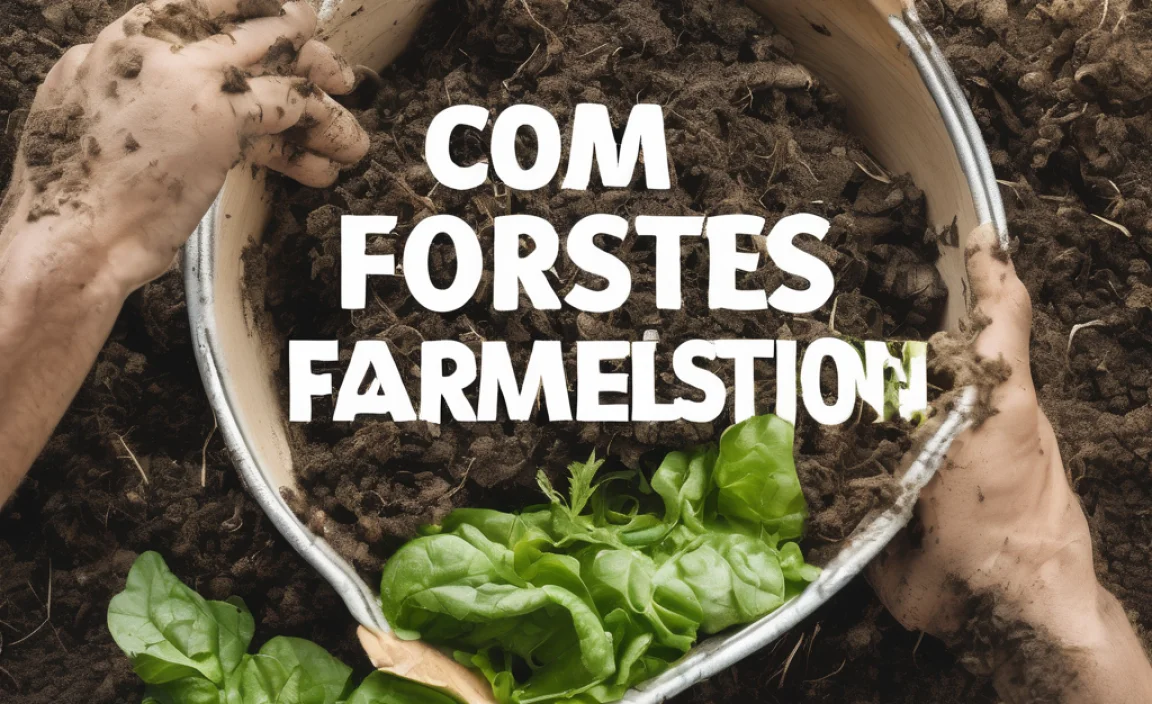Got rats eyeing your hotel’s compost? It can feel like a losing battle, but don’t sweat it! Keeping rats away from composting efforts is totally doable, even for a busy hotel. We’ll break down how your hotel can compost smarter, not harder, and keep those pesky critters out. Let’s get this handled, simply and effectively.
Composting For Hotels: Your Rat-Proof Guide
Hello there! Troy D Harn here from TopChooser, your go-to buddy for making home and business projects a breeze. Today, we’re tackling a common headache for hotels that want to go green: composting without attracting unwanted guests – namely, rats. It’s completely possible to compost your hotel’s food scraps and organic waste effectively while keeping your property clean and sanitary. We’ll walk through this step-by-step, so you can feel confident that you’re choosing the right methods and materials. Let’s make composting a win-win for your hotel and the environment!
Why Composting Matters for Hotels
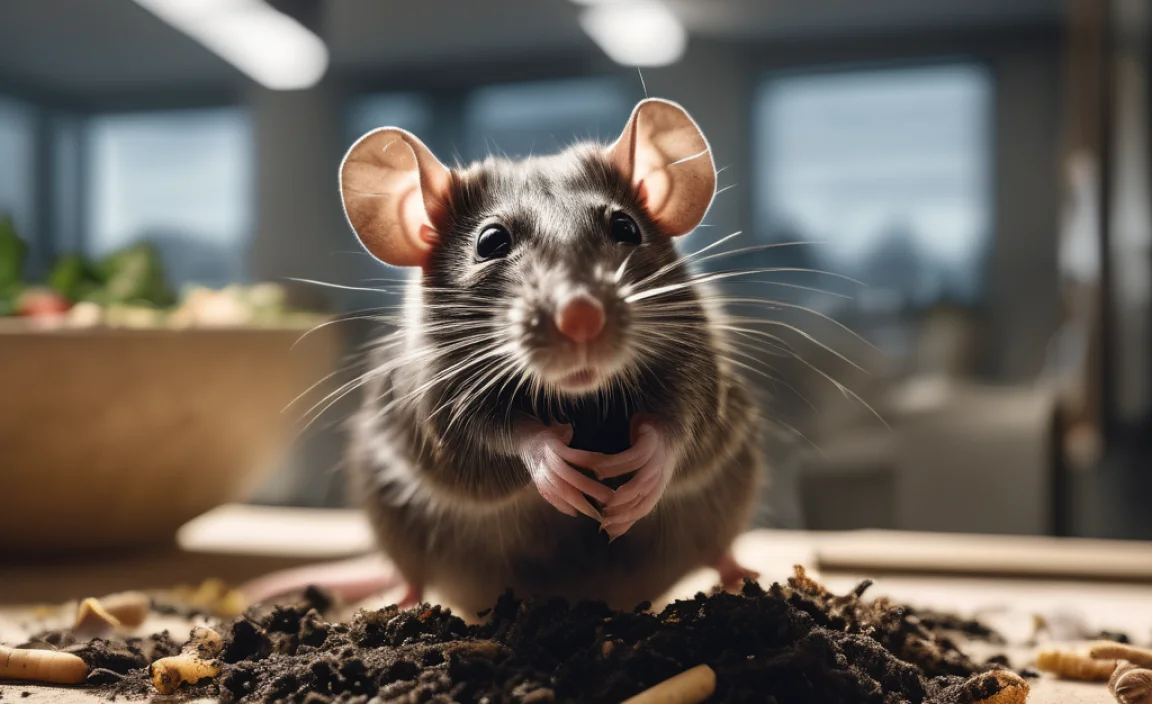
Composting is more than just a trend; it’s a responsible practice that can significantly benefit your hotel. By diverting organic waste from landfills, you reduce your environmental footprint. This can lead to lower waste disposal fees and even create a valuable soil amendment for your hotel’s landscaping. Plus, eco-conscious guests increasingly value businesses that demonstrate environmental stewardship. It’s a smart move for your reputation and your bottom line.
Understanding the Rat Problem with Hotel Composting
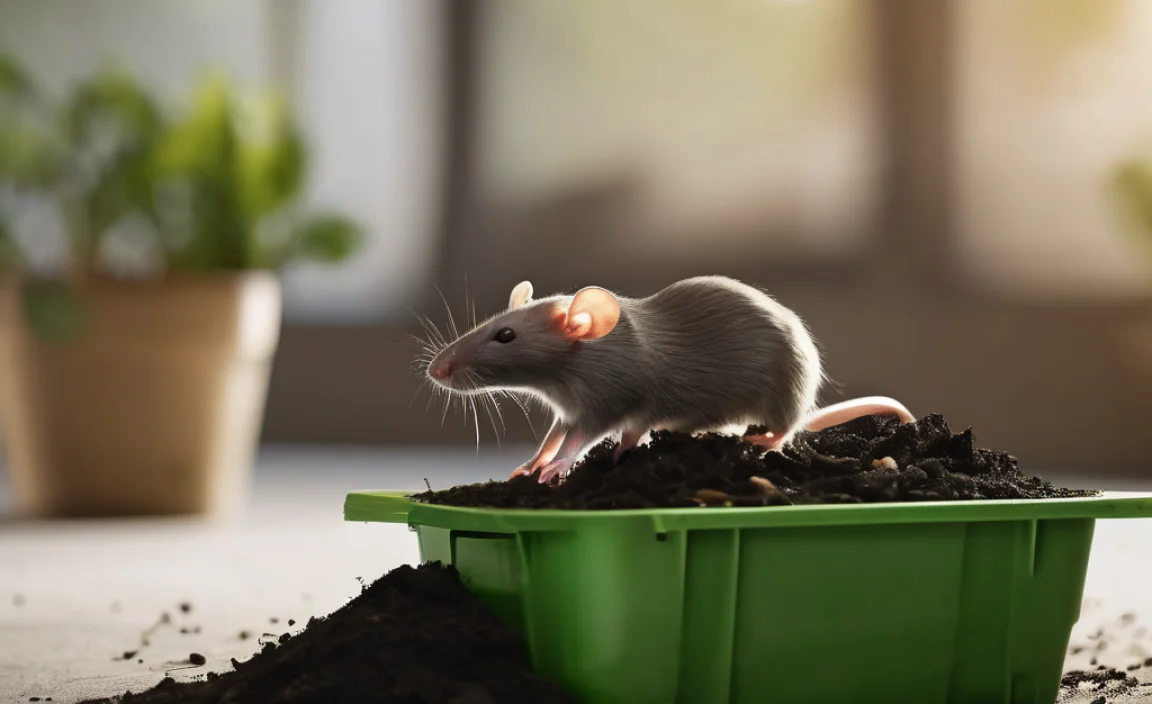
Rats are naturally drawn to reliable food sources, and an unsecured compost pile can look like an all-you-can-eat buffet. They are attracted by the smells of decaying food and the offer of easy meals. In a hotel setting, the volume of food waste can be substantial, making it an even bigger draw. The key to preventing this is understanding what attracts them and how to remove those attractants. It’s not about stopping composting, but about composting smartly.
What Attracts Rats to Compost?
- Odors: The aroma of aging food, especially meats, dairy, and greases, is a powerful attractant.
- Easy Access: Open piles or bins that are easily breached give rats a direct route to food.
- Presence of High-Value Foods: Items like meat scraps, bones, cheese, and oily foods are particularly tempting.
- Moisture and Shelter: Damp compost piles can provide a comfortable environment for rats to nest and breed.
Key Principles of Rat-Proof Hotel Composting
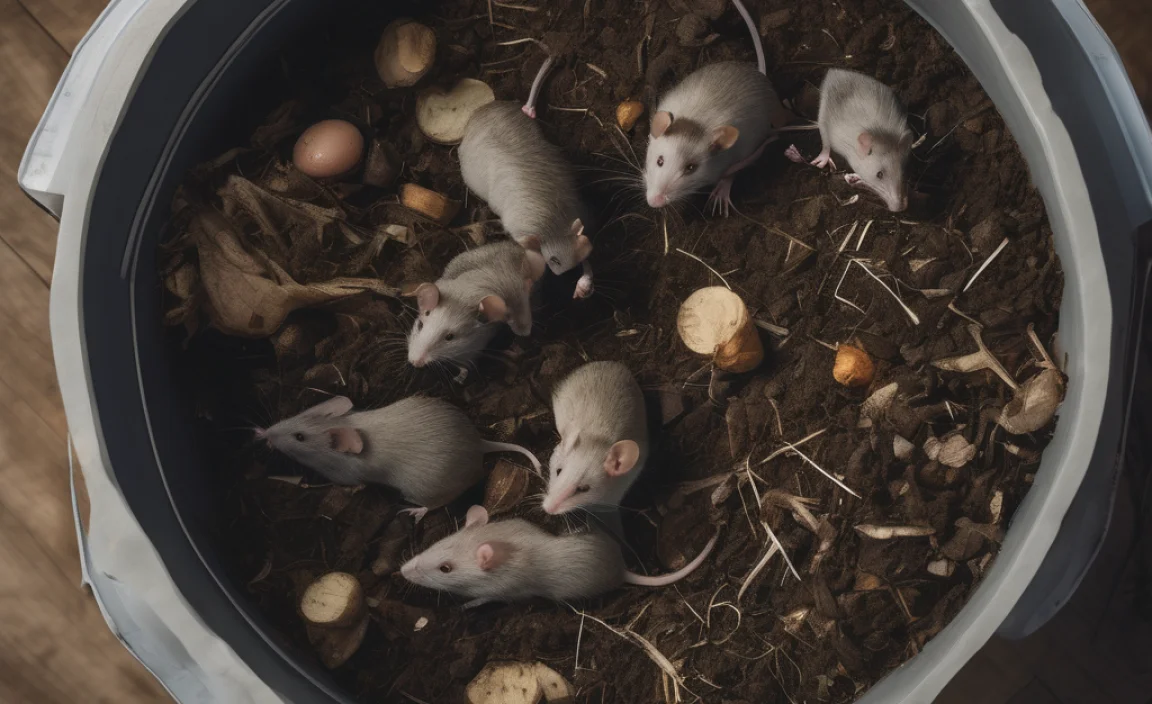
The good news is that managing rats around your compost doesn’t require exotic solutions. It boils down to a few core principles:
- Containment: Keeping the compost securely enclosed is the first line of defense.
- Exclusion: Using materials that rats cannot chew through or get into.
- Management: Regularly tending to your compost to reduce odors and prevent it from becoming a rat haven.
- Composting the Right Materials: Knowing what to compost and what to avoid is crucial.
Choosing the Right Composting System for Your Hotel
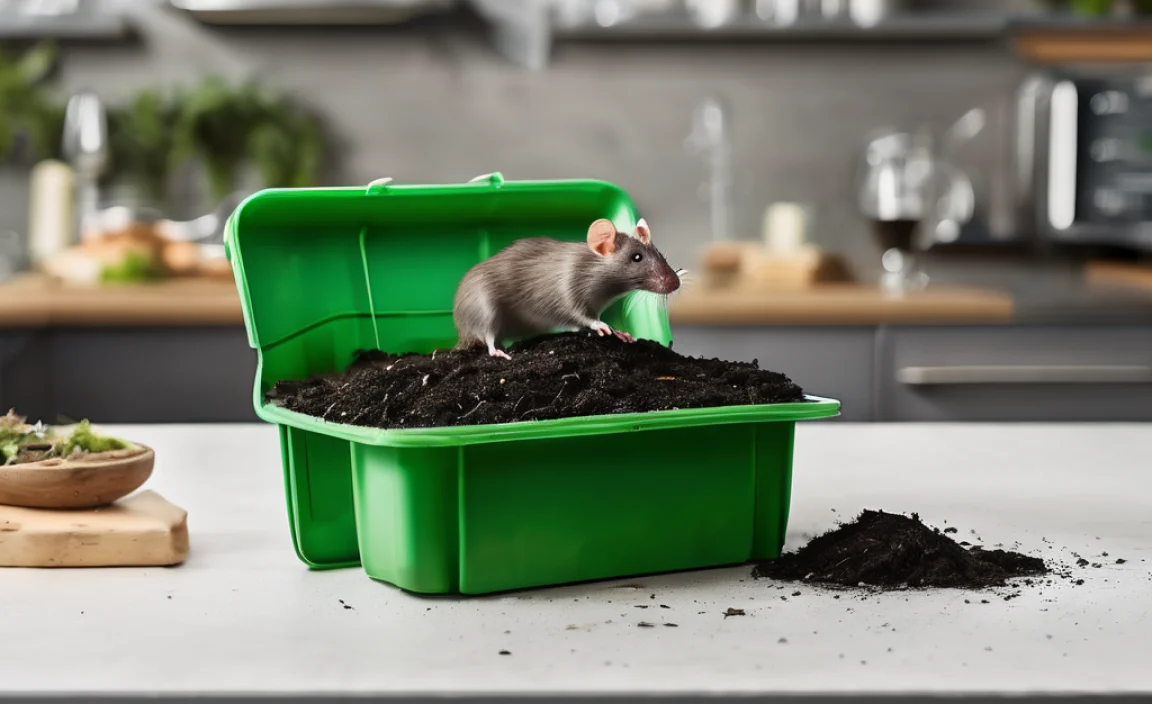
Not all compost bins are created equal when it comes to keeping pests out. For a hotel, reliability and durability are key. Here are a few options that work well:
1. Tumbler Composters
Tumblers are sealed units that you can rotate to mix the compost. Because they are enclosed, they offer excellent protection against pests like rats. Small to medium-sized hotels might find multiple tumblers manageable. They also tend to compost faster than open piles.
- Pros: Excellent pest control, faster composting, contained odors, easy to turn.
- Cons: Can be expensive, limited capacity per unit, may require more manual effort for larger volumes.
2. Rodent-Proof Stationary Bins
These are solid bins, often made of thick plastic or metal, designed with a lid and a floor that prevents burrowing. The sides should be solid and extend flush with hardware cloth on the bottom if it has openings. Aim for bins with secure latches.
- Pros: Good capacity, relatively durable, can be cost-effective for larger volumes.
- Cons: Requires manual turning (with a compost fork or aerator), needs to be placed on a solid surface to prevent burrowing.
3. Wire Mesh Bins with Hardware Cloth
You can build your own bin using sturdy wire mesh, ensuring the openings are small enough to keep rats out (1/4 inch or 1/2 inch hardware cloth is ideal). Crucially, the bottom of the bin must be lined with this hardware cloth and ideally extend a foot outwards to deter burrowing. You can also secure the bin to a concrete pad or pavers.
- Pros: Customizable size, can be affordable to build, good aeration.
- Cons: Requires construction, can be less aesthetically pleasing, need vigilant pest-proofing of the base.
Tip: For hotels dealing with significant food waste, consider a commercial-grade, sealed composting system. These are designed for volume and high security.
What to Compost (and What to Avoid) to Deter Rats
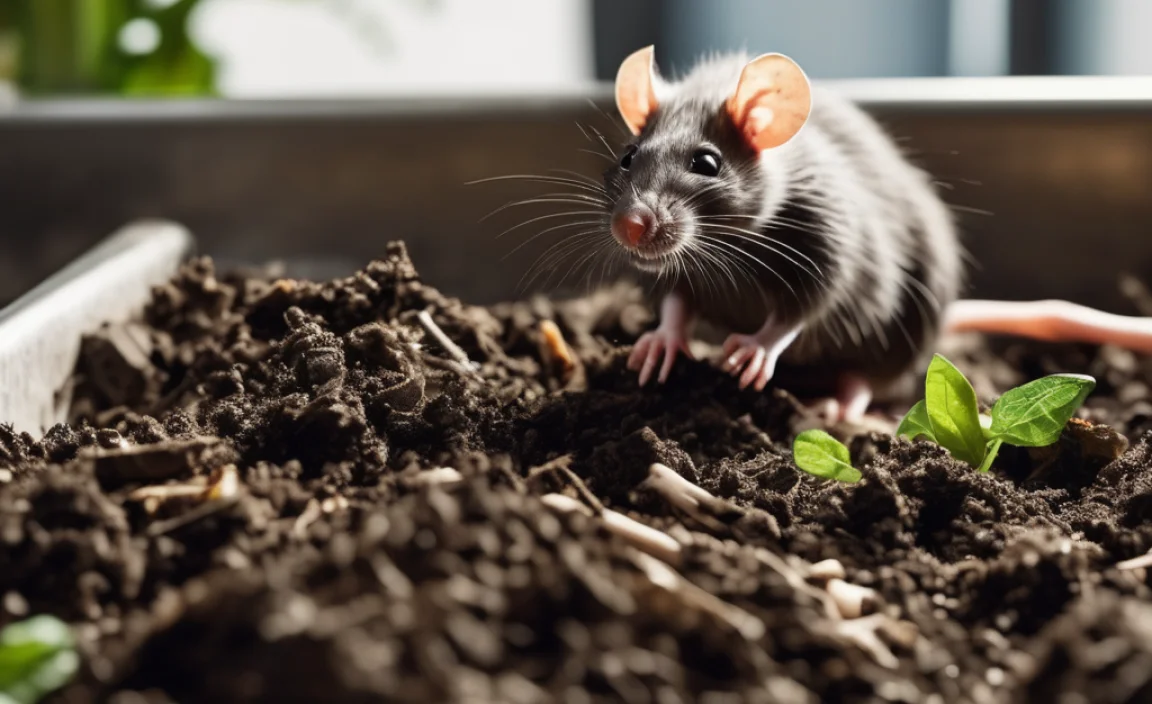
The biggest attractant for rats is undoubtedly the type of food waste you put into the compost. By being selective, you can significantly reduce their interest.
Good “Greens” (Nitrogen-Rich)
These items break down quickly and provide moisture and nitrogen.
- Fruit and vegetable scraps (peels, cores, ends)
- Coffee grounds and filters
- Tea bags (staples removed)
- Grass clippings (in moderation)
- Plant trimmings
Good “Browns” (Carbon-Rich)
These items add bulk, improve aeration, and balance the nitrogen. They are less likely to attract pests on their own.
- Shredded newspaper (black ink only)
- Cardboard (torn into small pieces, no glossy print)
- Dry leaves
- Straw or hay
- Sawdust (from untreated wood)
- Paper towels and napkins (from non-food areas)
AVOID These Items – Major Rat Attractants!
These should be kept out of your hotel’s compost bin entirely.
- Meat, fish, and bones: These have strong odors and are prime rat food.
- Dairy products: Milk, cheese, yogurt, and butter will spoil and attract pests.
- Oily foods and grease: These linger, smell strongly, and are highly attractive.
- Diseased plants: Can spread issues to your garden and may attract pests.
- Pet waste: Dog and cat feces can carry pathogens and parasites.
- Coated paper products: Glossy magazines or waxed cardboard don’t break down well and can contain inks that are problematic.
- Inorganic materials: Plastics, metals, glass.
For a comprehensive list of compostable materials, the U.S. Environmental Protection Agency (EPA) is an excellent resource.
Building and Maintaining Your Rat-Proof System: Step-by-Step
Let’s get down to the practical steps for setting up and running your hotel’s compost system to keep rats at bay.
Step 1: Choose Your Location Wisely
Select a spot that is:
- Accessible: Easy for staff to bring waste to, but not too close to guest areas or food preparation zones.
- Well-Drained: Avoid areas that get waterlogged.
- With Good Sunlight (Optional but helpful): Warmth can speed up decomposition.
- On a Hard Surface: Concrete, thick pavers, or even a layer of hardware cloth laid flat can prevent burrowing from below.
Step 2: Select and Install Your Bin
Whether you buy a tumbler, a rodent-proof bin, or build your own wire mesh enclosure, ensure it’s put together correctly.
- For purchased bins: Follow the manufacturer’s instructions carefully. Ensure lids seal tightly.
- For DIY wire mesh bins: Create a sturdy frame. Line the entire inside, including the bottom, with 1/4-inch or 1/2-inch hardware cloth. Staple or wire it securely. If placing on soil, bury or extend the hardware cloth outwards by at least 12 inches in a “skirt” to prevent burrowing.
Step 3: Start Layering Your Compost
Getting the right mix is vital for healthy composting and reducing smells that attract pests. A good rule of thumb is to aim for a 1:2 or 1:3 ratio of “greens” to “browns” by volume.
How to layer:
- Start with a layer of “browns” at the bottom to absorb moisture and provide air.
- Add your “greens” (food scraps).
- Cover the “greens” completely with a layer of “browns.” This is a critical step for odor control and pest deterrence.
- Continue layering as you add waste. Think of it like making a lasagna!
Table: The Ideal Compost Ratio (by Volume)
| Material Type | Ratio | Purpose |
|---|---|---|
| Greens (Nitrogen-rich) | 1 part | Provides moisture and nitrogen for decomposition |
| Browns (Carbon-rich) | 2-3 parts | Adds bulk, allows airflow, balances nitrogen, reduces odors |
Step 4: Manage Moisture Levels
Your compost pile should be moist, like a wrung-out sponge, but not soggy. Too much moisture can lead to foul odors and anaerobic conditions, which can attract pests. Too dry, and decomposition slows down.
- If too wet: Add more “browns” and turn the pile to help it dry out. Ensure good drainage.
- If too dry: Add a bit of water (using a hose or watering can) and mix it in.
Step 5: Aerate Regularly
Turning your compost introduces oxygen, which is essential for the microbes that break down the organic matter. It also helps regulate temperature and moisture, and crucially, it mixes the attractive food scraps deep within the pile, covering them with less appealing brown materials.
- Frequency: Aim to turn every 1-2 weeks for stationary bins. Tumblers can be rotated every few days.
- Method: Use a compost fork, aerator tool, or pitchfork to mix the materials thoroughly. For tumblers, just spin them.
Step 6: Maintain and Monitor
Regular observation is your best defense. Periodically check your compost system for:
- Signs of pests: Look for droppings, gnaw marks, or actual rodents around or in the bin.
- Unpleasant odors: A healthy compost pile should smell earthy, not foul. Strong odors usually mean the balance is off.
- Structural integrity: Make sure bins and enclosures are still secure, with no holes chewed or gaps formed.
What to do if you spot rats:
- Immediately cover any exposed food scraps with a thick layer of browns.
- Ensure the bin is securely latched and there are no gaps.
- Check the base of the bin for any signs of burrowing. If it’s a wire mesh bin on soil, that’s likely where they’re trying to get in.
- Temporarily stop adding meat, dairy, and greasy foods if you’ve been doing so.
- Consider using a thicker layer of browns on top of all additions.
If a rat problem persists, you may need to consider more robust pest control measures in consultation with a professional pest service. However, excellent compost management often solves the issue naturally.
Tools and Supplies for Hotel Composting
You don’t need a lot of fancy equipment to get started, but a few key items will make the job easier and more effective.
Essential Gear:
- Compost Bin: Tumbler, secure stationary bin, or DIY wire mesh enclosure.
- Kitchen Countertop Caddy: A small, lidded container for collecting food scraps from guest rooms or staff kitchens before taking them to the main bin.
- Compost Fork or Aerator Tool: For turning stationary piles.
- Gloves: For hygiene when handling compost.
- Shovel: For moving finished compost or bulk materials.
Helpful Additions:
- Watering Can or Hose: For adjusting moisture levels.
- Shredder: For quickly preparing cardboard and paper.
- Wheelbarrow: For moving larger quantities of materials.
- Hardware Cloth (1/4″ or 1/2″ mesh): Essential for DIY bins and reinforcing existing ones.
Composting for Hotels: A Table of “Do’s” and “Don’ts”
Here’s a quick-reference guide to help your hotel staff make the right composting choices.
| DO… | DON’T… |
|---|---|
| Layer “greens” and “browns” consistently. | Add meat, dairy, or oily foods. |
| Cover all new food scraps with a layer of “browns.” | Leave food scraps exposed on top. |
| Keep compost bins securely closed and latched at all times. | Leave compost bin lids open or accessible. |
| Maintain a moist, but not soggy, compost pile. | Allow the compost pile to become a soggy mess. |
| Aerate or turn the compost pile regularly. | Let the compost sit stagnant for long periods. |
| Use a secure bin with a solid base or hardware cloth lining. | Use an open pile on bare soil without pest-proofing. |
| Train staff on what is and isn’t compostable. | Assume everyone knows the composting rules without clear guidance. |
Frequently Asked Questions (FAQ) about Hotel Composting and Rats
Here are some common questions that come up:
Q1: “We’re a busy hotel. Can we really manage composting without it becoming a huge chore?”
Absolutely! The key is setting up a system that’s efficient and easy for your staff to use. Using sturdy, well-designed bins and clear protocols for what goes in helps a lot. Once you get into a routine, it becomes much less of a chore. Focus on one reliable system and train your team well.
Q2: “What’s the best way to make sure rats can’t dig under the compost bin?”
The most effective way is to place your bin on a solid surface like concrete pavers or a concrete pad. If you must place it on soil or grass, you MUST line the ground under and around the bin with sturdy hardware cloth (1/4″ or 1/2″ mesh). Extend this mesh at least 12 inches outwards from the base of the bin to create a barrier that rats can’t dig under or through.
Q3: “How quickly does composting happen, and is there a risk of it not working if we’re worried about pests?”
Composting can take anywhere from a few weeks to several months, depending on the method, materials, temperature, and how well it’s managed. If you’re worried about pests, focus on the safe practices: secure bins, the right materials, and consistent layering. A well-managed, rat-proof system will still decompose efficiently. The danger is letting it become an open buffet!
Q4: “Are there specific times of year when rats are more attracted to compost?”
Rats are generally more active and looking harder for food during cooler months as their natural food sources diminish. However, they can be a nuisance year-round if an easy food source, like an unsecured compost pile, is available. Consistent management throughout the year is important.
Q5: “We have a large hotel with a lot of food waste. What’s our best option for composting?”
For larger hotels, commercial-grade composting systems are often the most practical. These are typically enclosed, robust units designed for high volumes and pest resistance. Some hotels opt for partnerships with commercial composting services that pick up food waste regularly. Researching specialized “hot composting” or in-vessel systems designed for businesses

I am passionate about home engineering. I specialize in designing, installing, and maintaining heating, ventilation, and air conditioning systems. My goal is to help people stay comfortable in their homes all year long.

